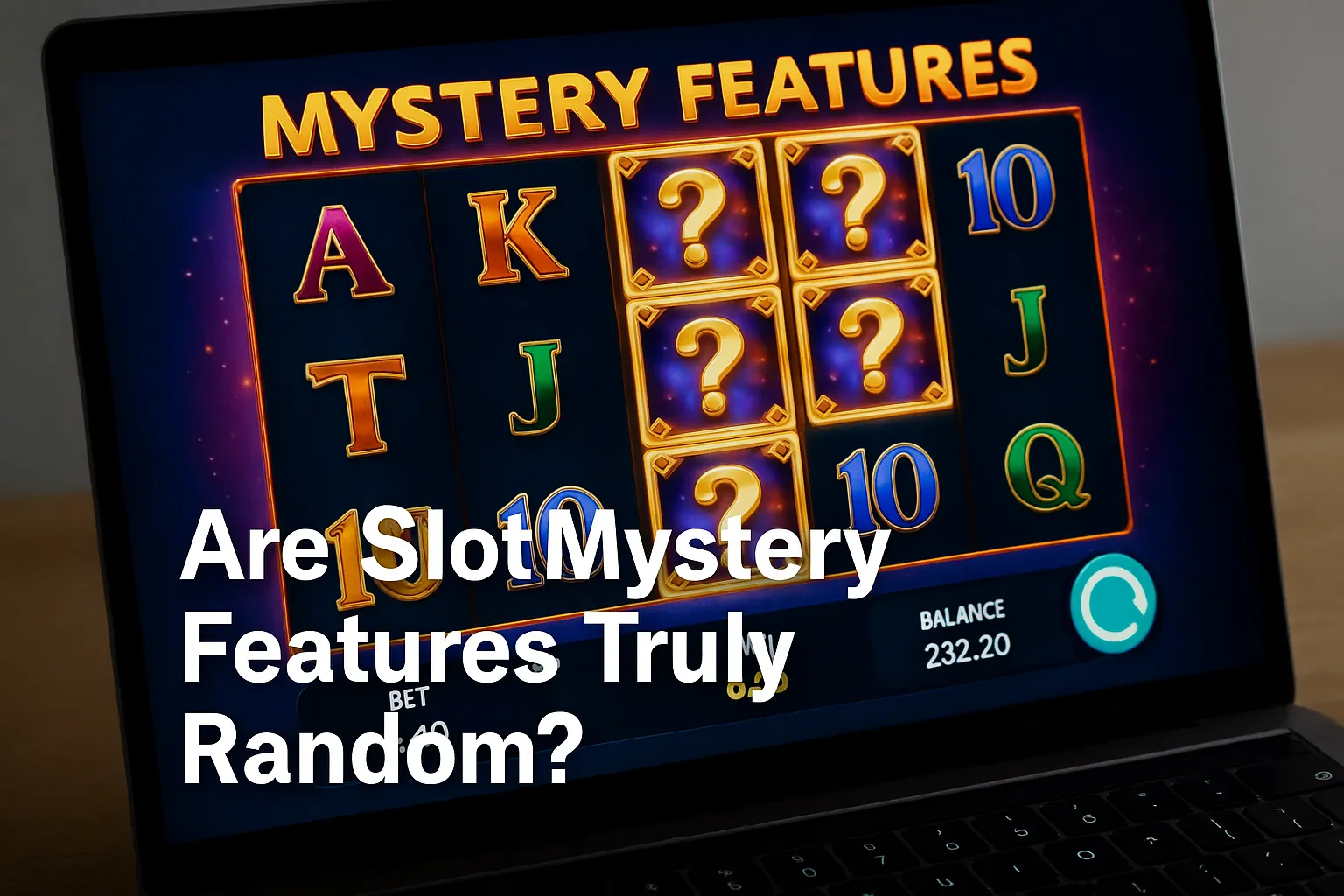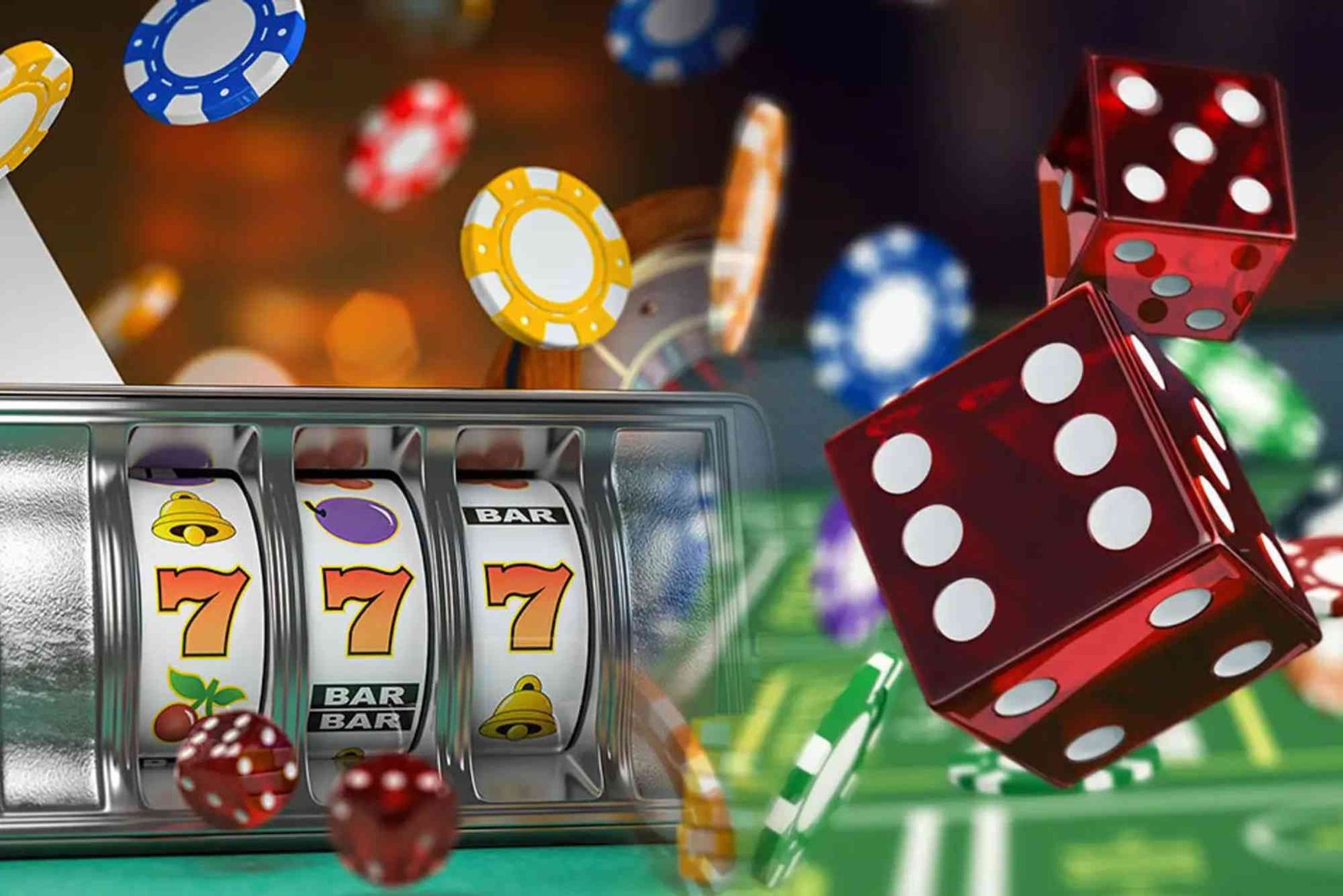Mystery symbols, pick ‘n’ click rounds, expanding icons that suddenly all morph into the same high-paying symbol—slot “mystery features” are engineered to deliver a jolt of dopamine and perception of near-miss magic. Players often ask me (usually after a session where a feature felt rigged): “Is any of that genuinely random, or is the game ‘deciding’ the outcome in advance?” After years of analyzing game math sheets, auditing RNG certification reports, and tracking player telemetry for retention studies, I can tell you that the answer is nuanced. Yes, mystery features are rooted in certified randomness, but what is random and when it’s locked in depends on the feature architecture coded by the studio.
Mystery features sit at the intersection of probability, psychological pacing, and regulatory compliance. To evaluate whether they are truly random, you need to understand how regulated RNGs interact with reel mapping, event triggering thresholds, and post-trigger display logic (the “reveal choreography” that makes something feel suspenseful even though the underlying result may already be fixed). There is also the question of whether certain feature frequencies adapt to player session attributes—legally, they should not in regulated markets, yet player perception of “streak balancing” persists because of variance mathematics, not secret patterning.
In community discussions—especially when people compare volatility between traditional licensed operators and top crypto betting sites—you’ll see speculation that mystery symbols are manipulated. Linking the keyword here once: the reality is that both regulated fiat casinos and well-audited crypto platforms must (or should) use provably fair or independently certified RNG layers. Differences in feel usually stem from game math volatility, hit frequency, and distribution of bonus weight among base, feature, and jackpot segments rather than covert mid-session adjustments.
What Exactly Is a Slot Mystery Feature?
A “mystery” element is any mechanic where the symbol identity or reward magnitude is hidden until a reveal event. Common forms include fully hidden symbols that flip to a uniform symbol, mystery stacks that transform into an expanded reel of one icon, “bag” or “chest” pick features concealing credit prizes or multipliers, coin collect features that may randomly upgrade, and progressive wheel slices that start as question marks. The design objective is to delay certainty to amplify arousal and perceived agency while the financial outcome is either (a) precomputed at trigger or (b) resolved through sequential independent RNG draws during the reveal.
Core Architectural Models
Model 1 – Pre-Resolved Outcome: When the triggering spin lands (e.g., you hit three mystery stacks), the RNG call not only determines that a reveal will occur but also assigns the final symbol (or prize set). The subsequent animation is pure presentation.
Model 2 – Sequential Resolution: Each symbol (or pick) is resolved at the moment it is revealed, producing a new RNG call per symbol/pick. This can create slightly higher computational overhead but reinforces a feeling of unfolding suspense.
Model 3 – Hybrid Weighted Pool: The trigger fixes a pool composition (e.g., 6 low symbols, 2 medium, 1 high), while each individual reveal randomly draws from that pool without replacement until exhausted.
Regulations typically allow any of these provided the published RTP and volatility profile match the certified math file and no adaptive manipulation of probabilities occurs after session start.
How RNG Certification Relates to Mystery Features
Independent labs (e.g., eCOGRA, GLI, iTech Labs) test that the RNG stream passes statistical batteries (Diehard, NIST SP800-22, TestU01 subsets) and that mapping logic uses the stream correctly. Certification focuses on unbiasedness, independence, and distribution compliance. For mystery features, the lab also validates that the probability of each prize or symbol composition over a large sample matches theoretical values. Crucially, labs examine reel strips and state transition tables, not just visual effects. If the feature chooses from a table of outcomes, each vector’s weight is checked to align with the theoretical return.
When Players Think “It’s Scripted”
Long losing streak followed by a set of low-paying mystery reveals fosters a narrative of suppression. High-volatility math purposely clusters dead spins and compacts a proportion of RTP into rarer, chunkier events. Mystery features can feel manipulated when they land frequently but pay trivially; often the math allocates a small RTP slice to frequent mini-events (the “entertainment budget”) while reserving major RTP weight for occasional full-bonus rounds or jackpots. The constant teases create a cognitive illusion that the game “owes you” a better reveal soon—classic Gambler’s Fallacy territory.
Are Mystery Features Ever Adaptive?
In regulated licensed jurisdictions, outcome probabilities for a live game instance must remain static (bar explicit “feature buy” modes with disclosed altered RTP). Adaptive personalization, such as adjusting reveal odds because your bankroll shrank, would breach fairness requirements. What can change is presentation frequency through multiple orthogonal event layers: for example, a slot may have a “near miss nudge” that triggers pseudo-randomly according to a defined hit rate targeting an entertainment metric. That doesn’t reweight the underlying pay distribution; it just schedules more animation events within permitted statistical bounds.
Crypto-oriented platforms that integrate “provably fair” seeds give technically skilled players a chance to verify each reveal. In those systems, a server seed + client seed + nonce produce hash-derived numbers; each mystery reveal consumes one nonce increment. You can reconstruct reveals after the fact, demonstrating no mid-sequence tampering. Where transparency lags (some offshore or unlicensed sites), you rely on reputation rather than formal certification, increasing suspicion when variance bites.
Volatility, Hit Frequency, and Perceived Randomness
Volatility (variance of outcome distribution) heavily colors your randomness perception. Two games with identical RTP (say 96.2%) can allocate that return differently: Game A spreads RTP more evenly (lower standard deviation per spin), Game B concentrates it into infrequent but explosive mystery symbol full-screen hits. In Game B you’ll endure more “garbage reveals” because the probability mass supporting the dream full-screen had to come from somewhere—so small reveals subsidize the rare premium transformation.
Symbol Weighting and Reel Mapping
If a mystery feature transforms into any paying symbol, the chance of it becoming a premium is usually significantly lower than a low-paying symbol due to weighting. Suppose there are 9 candidate symbols; they are almost never equally weighted 1/9 each. A common mapping might give low symbols combined weight >70% of the selection probability. When a feature reveals low icons most of the time, that’s not bias—it’s arithmetic. Studios sometimes mitigate disappointment by giving mystery symbols a slightly elevated chance of mid-tier symbols versus base reels, but they compensate this by lowering frequency or adjusting paytable multipliers to keep global RTP stable.
Can Animation Order Influence Perceived Fairness?
Yes. Designers use reveal sequencing—outer symbols first, center last; slow-turn cascading flips; synchronized “almost” transformations—to intensify suspense. If you see several high symbols appear before the final reveal lands low, it feels like a robbed near-miss even though each reveal (Model 2) or the entire bundle (Model 1) was predetermined. Player memory biases weigh emotionally charged almost big wins more than routine small hits, causing selective recall that “the game always switches at the last second.”
Near-Miss Engineering
Regulations often prohibit artificially constructing near misses on jackpot symbols more frequently than randomness would allow. However, generalized suspense (delayed reveals, dramatic audio stings) is permitted. So long as the underlying probabilities aren’t altered to create more almost-wins, the UX layer can stretch the reveal timeline for emotional effect.
Practical Player Insights
Approach mystery features with expectation discipline. Track (even roughly) average value: note total stake across a session and aggregate value returned by mystery events. If the feature averages 2–5× bet and occasionally spikes higher, you can model that as a small-return, mid-frequency component and allocate session bankroll accordingly. Avoid raising stakes because of a perceived “due” premium mystery reveal; independent trials don’t retain memory of prior disappointments.
Bankroll segmentation helps: pre-set stop points at (a) session loss limit, (b) feature hit count threshold, and (c) time limit. If you’ve hit, say, 30+ low-value reveals without the high spike, you are not statistically closer to a big one unless the game explicitly runs a pity timer, which regulated slots should not. Recognize cognitive distortions: confirmation bias (remembering only cold sequences), clustering illusion (seeing patterns in independent results), and hot-hand fallacy (raising bets after two larger reveals).
Misleading Marketing Language
Terms like “random chance to upgrade!” may refer to a structured probability table, not an equal chance. “Guaranteed mystery feature every X spins on average” is imprecise; averages emerge over large samples, not guaranteed within a micro-sequence. Properly transparent lobbies now list RTP ranges (due to feature buys) and volatility meters. Treat vague descriptors (“high feature frequency”) cautiously without published hit rate data.
Testing Randomness Yourself (Informally)
You can’t fully audit a closed-source slot, but you can log 500–1,000 spins: record number of mystery triggers, symbol outcomes, stake, and return. Compare observed frequencies to claimed volatility descriptors. Large deviations over small samples are normal; only persistent multi-thousand-spin discrepancies might hint at misperception or misadvertised features (true misconduct is rare among licensed studios). On provably fair crypto games, retrieve the seed, replicate the hash chain, and verify each reveal number falls within the published selection mapping.
Why “Streak Correction” Feels Real
Human pattern detection firmware expects equilibrium quicker than probability supplies it. Suppose a premium symbol transformation chance is 8%. Probability of failing 20 consecutive times: 0.92^20 ≈ 0.188 (18.8%). That’s not rare. After such a streak, landing a premium once creates the illusion the game “decided it was time.” In reality, the chance on each trial remained 8%. Mystery features amplify this because each reveal is emotionally heightened, strengthening memory encoding of both droughts and payoffs.
Responsible Play and Mystery Features
Mystery mechanics can prolong sessions (higher “time on device”) through micro-interactions. Healthy design should: (1) clearly show aggregate winnings from the feature, (2) avoid ambiguous progress illusions where none exist, and (3) provide session stats. Players benefit from using casino tools: reality checks, loss limits, cool-off timers. Treat mystery reveals as entertainment events, not stepping stones “toward” an owed outcome.
Future Direction
Expect more multi-layer hybrids: mystery symbols that, when landing in defined patterns, upgrade a persistent meter leading to meta-features (e.g., super reels). There is momentum toward more transparency: dynamic on-screen probability hints (disclosed ranges), especially in jurisdictions embracing algorithmic clarity. Provably fair frameworks may expand beyond crypto niches, letting players verify not only the spin but each internal sub-feature chain. AI-driven personalization will likely remain confined to UI/UX pacing (sound intensity, animation speed) rather than actual probability reweighting in regulated markets.
Final Thoughts
So, are slot mystery features truly random? Within properly licensed or provably fair ecosystems, yes—random in the sense that the RNG mapping adheres to fixed, audited probability distributions. The feeling of manipulation emerges from volatility, weighting, reveal choreography, and cognitive biases. Understanding the architectural model (pre-resolved vs sequential), recognizing the statistical reality of streaks, and applying disciplined bankroll frameworks will demystify the drama. Enjoy the suspense, but respect the math: randomness is not a promise of smoothness; it’s the engine of unpredictability that underwrites both the dead patches and the thrilling full-screen transformations.




